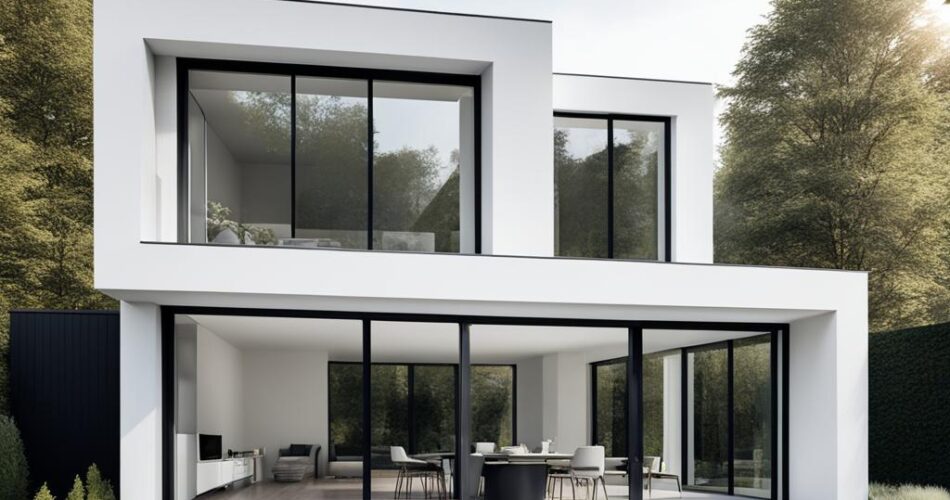Minimalist house design focuses on essential elements. It celebrates simple living and modern style. Clean lines, open spaces create serene environment.
Natural materials, functional layouts allow homeowners declutter. It streamlines spaces for calming, organized ambiance.
Key Takeaways
- Minimalist design prioritizes simplicity, functionality, open layouts.
- It embraces clean lines, natural materials, modern aesthetic.
- Minimal decor, clutter create serene, organized environment.
- Open plans, natural light enhance spaciousness.
- Minimalist homes incorporate sustainable, energy-efficient elements.
What is Minimalist House Design?
Minimalist house design focuses on simplicity. It embraces “less is more.” Design prioritizes essentials, removing excess. Spaces are clean, open, light-filled.
This style promotes calm, tranquility. Minimalist design creates clutter-free environments.
Characteristics of Minimalism
Minimalism has clean lines, geometric shapes. Color palettes are neutral, aesthetics simple. Furniture and decor are minimal.
Negative space and clutter-free spaces prioritized. Natural materials, textures used strategically.
- Clean lines and geometric shapes
- Neutral color palettes and simple aesthetic
- Minimal furniture and decor
- Emphasis on negative space and clutter-free living spaces
- Strategic use of natural materials and textures

Minimalism as a Lifestyle
Minimalism extends beyond design principles. It’s a lifestyle embracing simplicity, mindfulness. A minimalist lifestyle involves decluttering.
Priorities are on essentials, letting go. This approach promotes freedom, clarity, focus.
Origins and Evolution of Minimalism
Minimalism’s roots trace mid-20th century. Artists, designers rejected ornate, excessive styles.
Figures like Mies van der Rohe pioneered “less is more” in architecture.
Over decades, minimalism expanded realms. Influencing architecture, design, art, fashion, lifestyles. Today embraced for harmonious living.
Benefits of Minimalist House Design
Minimalist house design offers many advantages beyond aesthetics. By embracing simplicity and functionality, this style promotes a decluttered, low-maintenance living space that enhances well-being.
Simplicity and Functionality
Minimalist design revolves around emphasizing essentials while eliminating excess. This functional philosophy translates into clean, uncluttered, and purposeful living spaces. Every element serves a specific function, creating a harmonious, streamlined environment that fosters productivity and peace of mind.
Reduced Clutter and Improved Organization
A significant benefit is the reduction of clutter. With fewer possessions and strategic storage solutions, decluttered spaces become a reality. This newfound order and organization create a visually appealing environment and contribute to increased mental clarity and reduced stress.
- Minimalist interior design helps keep clutter at bay by emphasizing eliminating excess items and providing open display and storage units.
- A clutter-free environment can promote improved focus and concentration.
Increased Natural Light and Open Spaces
Minimalist house design embraces open concept layouts, allowing seamless flow between living areas. This openness, coupled with strategic window placement, maximizes natural lighting, creating bright, airy, and inviting spaces.
The emphasis on open areas and clean lines enhances the sense of spaciousness, contributing to a calming, serene atmosphere.
Minimalist interior design increases the feeling of spaciousness in a home due to its open floor plan.
Beyond aesthetic appeal, minimalist house design offers space efficiency, making the most of every square foot while reducing clutter and promoting sustainability.
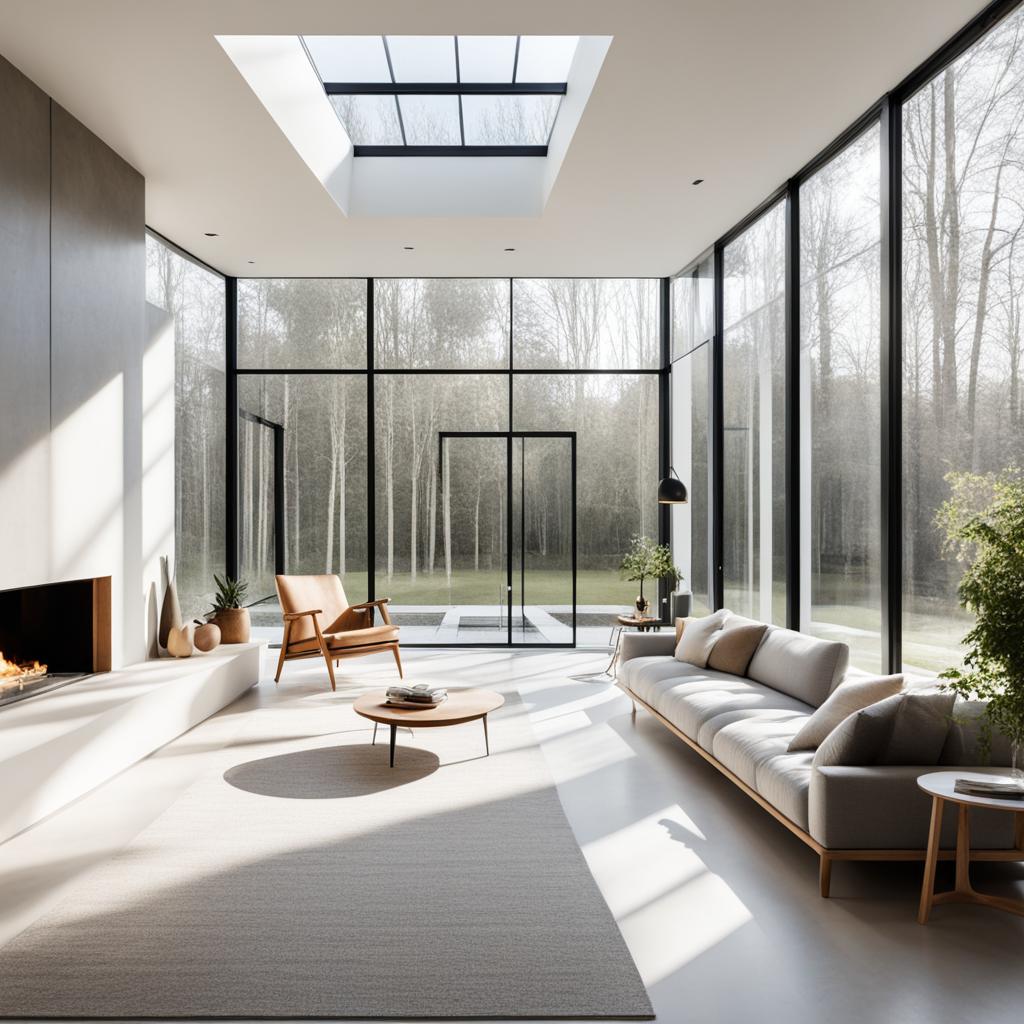
Key Elements of Minimalist House Design
Minimalist house design keeps things simple. It focuses on functionality and nature. This look features clean lines and shapes. Neutral colors and natural materials create calm spaces.
By removing excess, minimalist design promotes peace and calm. It lets you focus on essentials.
Clean Lines and Geometric Shapes
Minimalist homes use straight lines and simple shapes. These clean lines and angles create order. The spaces look striking yet uncluttered.
This architectural style embraces contemporary looks. The beauty of the structure shines.
Neutral Color Palettes
Minimalist spaces often use neutral colors like white, beige, and gray. This calming color scheme lets textures stand out.
While monochromatic, colors and textures add warmth. Different shades create depth without clutter.
Natural Materials and Textures
Natural materials like wood, stone, and concrete feature prominently. Their beauty and textures connect indoors to nature.
Integrating these elements creates harmony and grounding. The living space feels one with its surroundings.
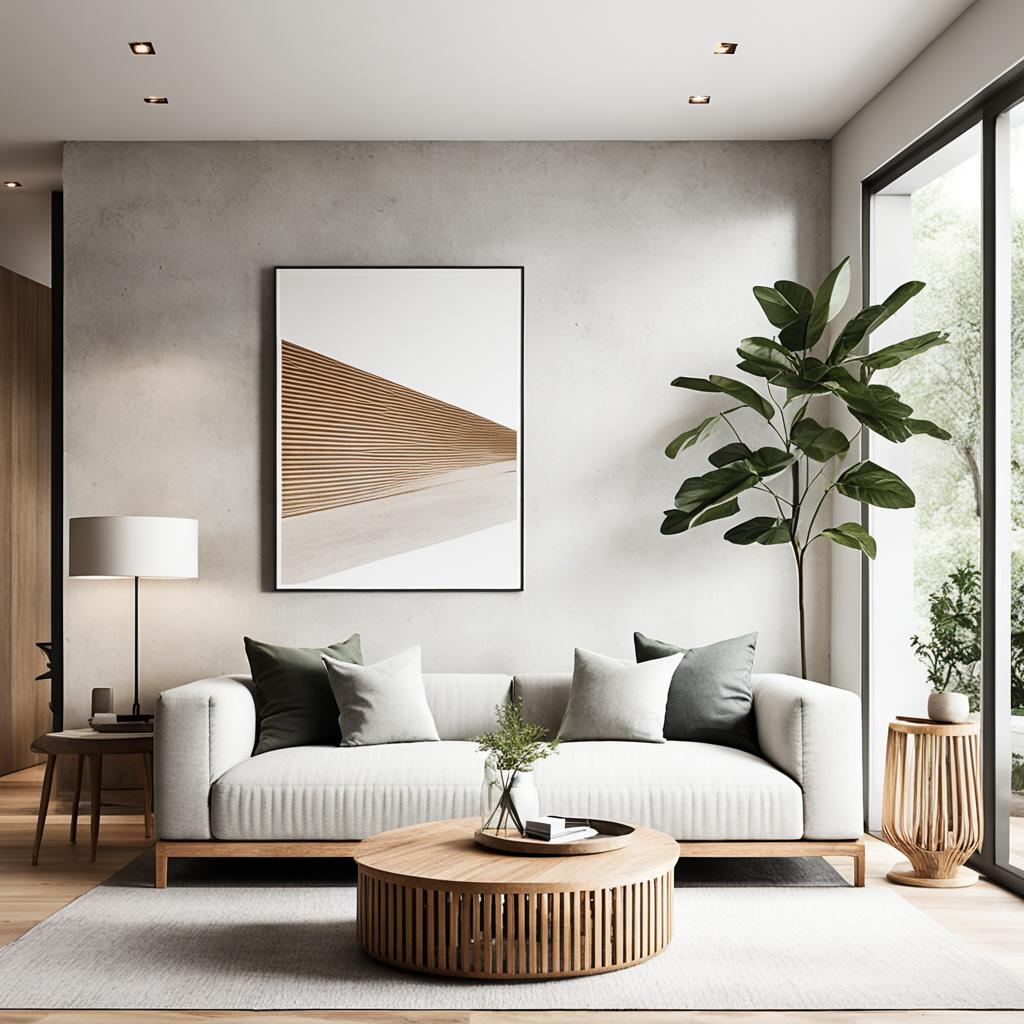
Minimalist design focuses on purpose over excess. With clean lines, geometric shapes, neutral palettes, and natural materials, these homes provide tranquil living environments.
Minimalist Living Spaces
Embracing minimalism creates serenity, simplicity. Minimalist living room, bedroom, kitchen, dining room prioritize functionality, clean lines, decluttered interiors.
Minimalist Living Room Ideas
Minimalist living room is tranquility. Curated multifunctional furniture, strategic lighting create openness. Symmetrical art, geometric pillows add understated elegance.
- Opt for neutral color palettes and clean, geometric shapes.
- Incorporate exposed structural elements like metal and wood for an industrial-chic look.
- Utilize bare-bones lighting without shades for a modern, minimalist aesthetic.
Minimalist Bedroom Designs
Minimalist bedroom is a haven. Focus on clutter-free environment. Storage beds, tapered furniture create streamlined, functional space.
“The minimalist bedroom is a sanctuary where simplicity reigns, allowing for a peaceful night’s sleep and a rejuvenating start to the day.” – Kate Arends, Designer
Minimalist Kitchen and Dining Areas
In minimalist kitchen and dining room, emphasis is clean lines, natural materials, seamless flow. Careful planning ensures every element serves purpose, creating harmonious efficiency.
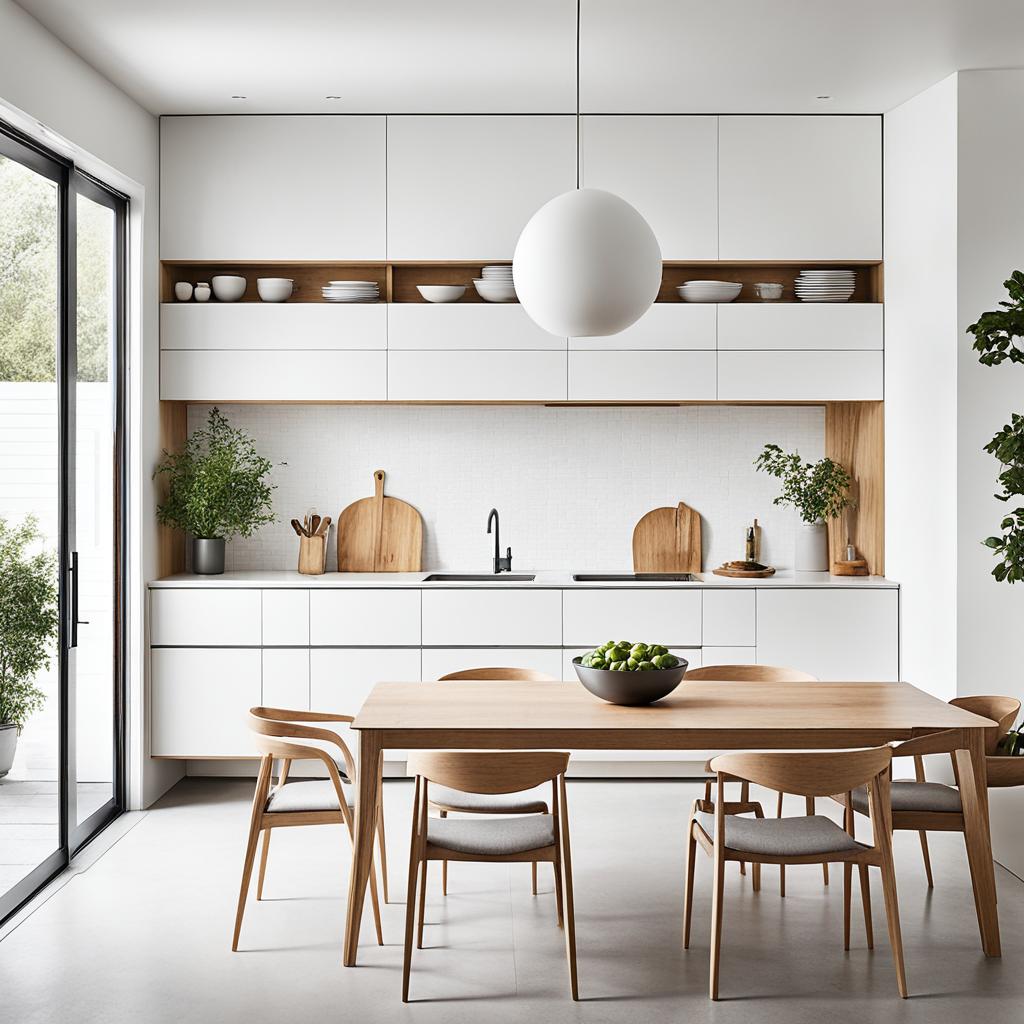
Embrace minimalism to transform living spaces into tranquil, functional retreats inspiring calm, order.
Indoor-Outdoor Connection
Minimalist house design emphasizes a deep connection between indoor and outdoor spaces. This seamless indoor-outdoor flow blurs boundaries, embracing natural surroundings.
Architects integrate living areas with exterior landscapes through open concept layouts. Floor-to-ceiling glass walls dissolve barriers, while retractable doors invite outdoors in.
The indoor-outdoor fusion creates a stunning aesthetic and promotes sustainability. Natural ventilation and abundant light reduce reliance on artificial cooling and electrical lighting.
Embracing nature is central to minimalist design philosophy. Travertine floors, engineered-oak flooring, and reinforced concrete structures establish a seamless transition between indoors and outdoors.
- Urban minimalist homes may feature aluminum louvers and floor-to-ceiling pocket doors opening onto lush courtyards or terraces.
- Rural minimalist dwellings could nestle into landscapes, with windows framing breathtaking vistas and covered patios providing outdoor living spaces.
“The minimalist approach aims to create a sense of oneness with nature, where the boundaries between the built environment and the natural world become fluid and harmonious.” – Daniel Joseph Chenin, Architect
The indoor-outdoor connection in minimalist homes celebrates simplicity and sustainable design principles. Minimizing barriers and maximizing integration between interior and exterior spaces offers tranquility and connection to nature.
Minimalist House Styles
Minimalist architecture encompasses diverse styles. Each style has unique traits and roots. From clean modern homes to serene Scandinavian and Japanese designs, these offer a refreshing break from excess.
Modern Minimalist Homes
Modern minimalist architecture embraces sleek lines, geometric shapes, and contemporary aesthetics. These homes often have open floor plans, large windows, and blend indoor/outdoor spaces harmoniously. With functionality and simplicity focus, modern minimalist homes create tranquil calm.
- Architect: 85 Design
- Area of the architecture project: 100 m²
- Year of completion: 2018
The Castle High project by Hyde + Hyde Architects exemplifies long-term minimalist dedication. Completed in 2010 after a decade-long journey, it showcases the sector’s commitment.
Scandinavian Minimalism
Rooted in hygge principles and nature appreciation, Scandinavian minimalism balances functionality and coziness. These homes often use natural wood, muted colors, and abundant natural light. The emphasis creates warm, inviting relaxation spaces fostering well-being.
“The White Patio House by Pashenko Works highlights innovative urban housing solutions within minimalist architecture.”
Japanese Minimalism (Zen Aesthetic)
Inspired by Zen Buddhism, Japanese minimalism embodies simplicity, tranquility, and nature harmony. These homes often use natural wood and stone, clean lines, and seamless indoor/outdoor integration. The emphasis creates peaceful, meditative environments connecting with nature.
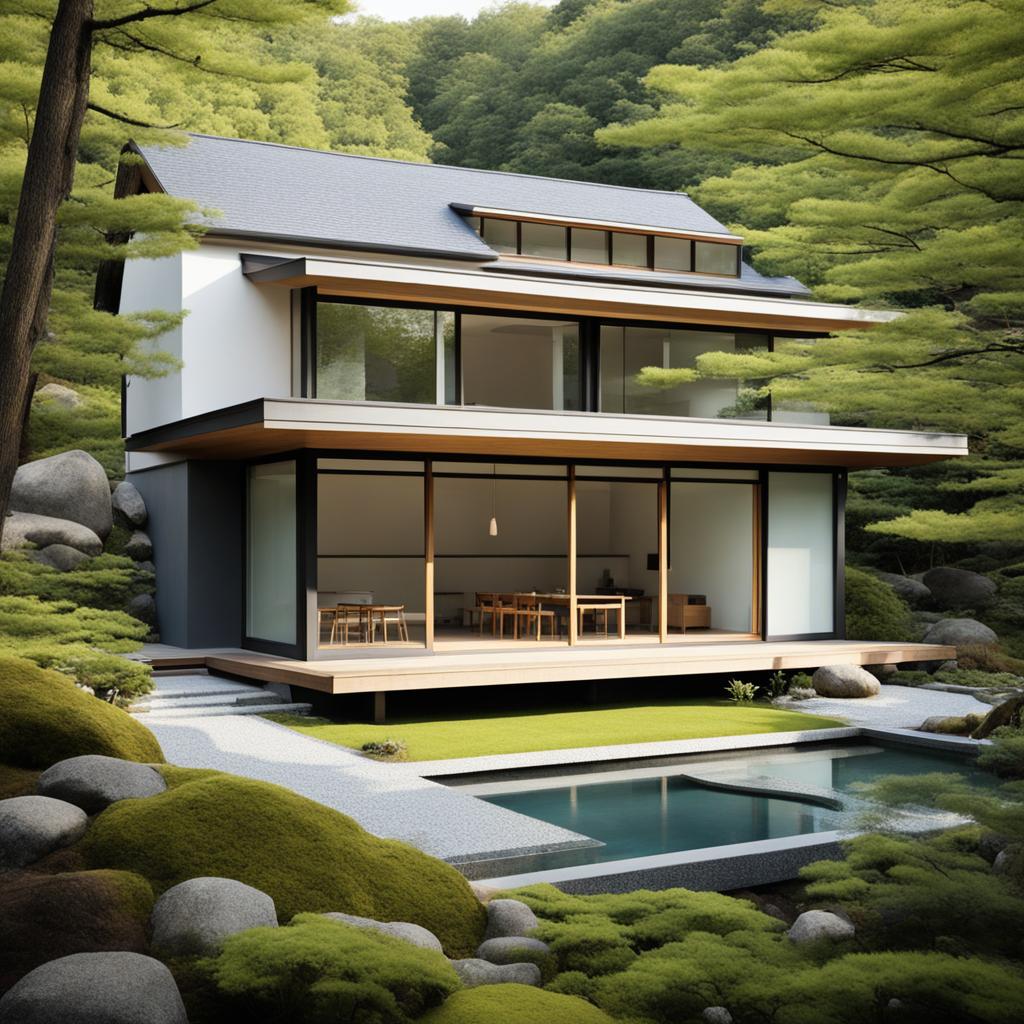
The Esplanade House by of Architecture, spread across three levels, caters to live-and-work needs. It reflects increased demand for versatile living spaces in minimalist architecture.
Whether preferring contemporary modern allure, Scandinavian natural warmth, or Japanese serene tranquility, these minimalist styles invite embracing simplicity’s beauty. They allow focusing on what truly matters.
Sustainable Minimalism
Our world prioritizes environmental consciousness nowadays. Sustainable minimalism harmoniously blends minimalist principles with eco-friendly practices. This approach embraces simplicity’s beauty while actively reducing environmental impact.
At sustainable minimalism’s core lies energy-efficient design. Minimalist homes optimize natural light, ventilation, and insulation. This minimizes excessive energy consumption. From strategic window placement to energy-efficient appliances, efficiency maximizes while maintaining sleek aesthetics.
Energy-Efficient Design
Minimalist homes thoughtfully craft optimized natural light, ventilation, and thermal insulation. This minimizes excessive energy consumption needs. From strategically placed windows to energy-efficient appliances, every aspect meticulously plans maximized efficiency while maintaining sleek, uncluttered aesthetics.
Eco-Friendly Materials
Sustainable minimalism advocates environmentally responsible, low-carbon-footprint sustainable materials. Natural bamboo, reclaimed wood, and recycled glass exude warmth and texture while reducing finite resource strain. Embracing these eco-conscious choices harmonizes minimalist homes with nature, embodying timeless, elegant design.
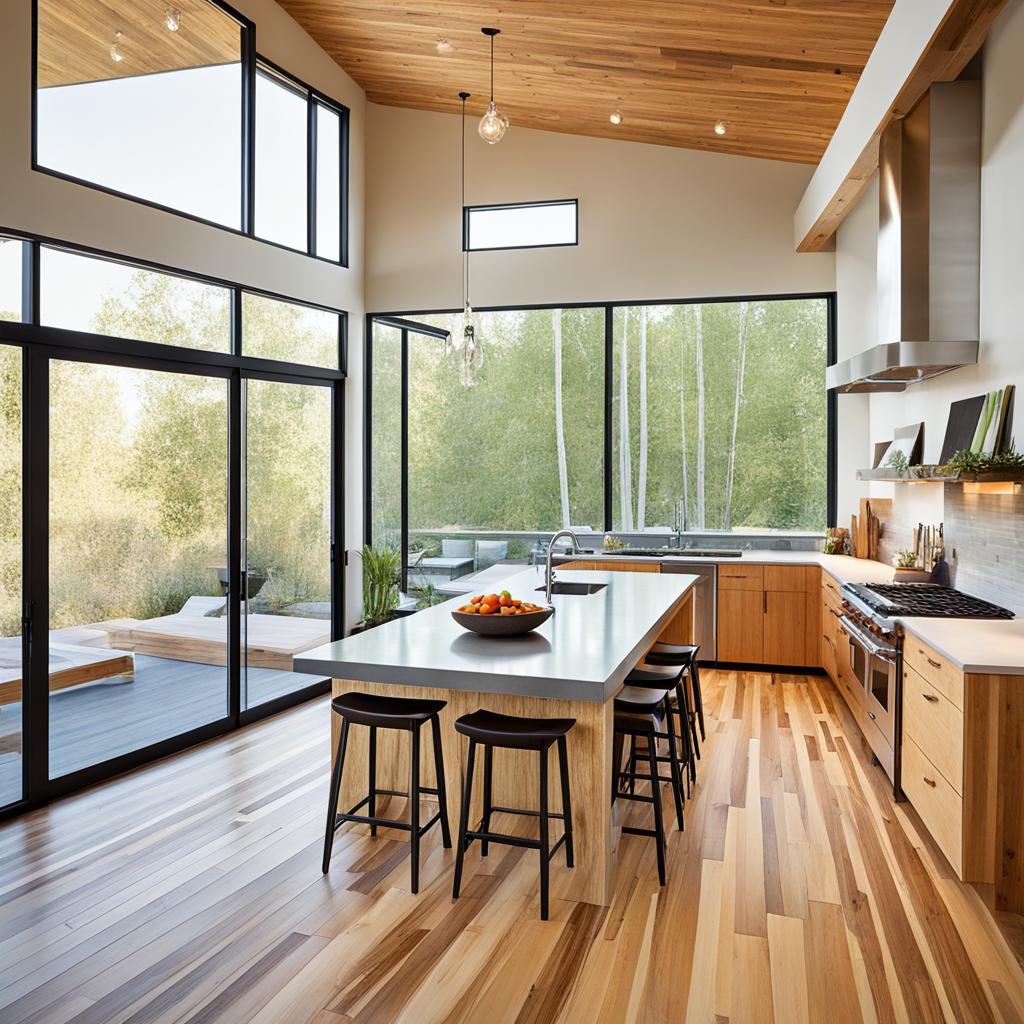
Minimizing Environmental Impact
Embracing a minimalist lifestyle inherently aligns with reducing environmental footprints. By consciously minimizing consumption, prioritizing quality over quantity, minimalists actively preserve natural resources. This mindset extends beyond physical space, encouraging mindful practices minimizing waste, promoting responsible resource use.
- Sustainable acts reduce consumption before recycling or reusing materials.
- Minimalist designs encourage low-industrial-processing material use.
- Compact apartments consume less energy, limiting accumulated physical goods.
“Minimalism is a tool to rid yourself of life’s excess in favor of focusing on what’s important—so you can find happiness, fulfillment, and freedom.” – Joshua Becker, Author of “The Minimalist Home”
As we strive for a sustainable future, sustainable minimalism offers a harmonious path celebrating simplicity while embracing environmental stewardship. By integrating energy-efficient homes, sustainable materials, and conscious living practices, we create beautiful spaces contributing to a greener, more mindful life.
Minimalist Decor and Furniture
In minimalist home design, decor and furniture are crucial. The philosophy emphasizes quality over quantity. It focuses on multifunctional pieces, decluttering, and simple accessories.
Minimalist furniture often has multifunctional designs. This allows versatility and efficient space use. For example, the iconic Tulip table has sleek lines. It can serve as a dining or work surface.
Modular sofas and ottomans offer hidden storage. This adds functionality without compromising the clean look.
Multifunctional Pieces
- Tulip tables: Sleek, versatile designs for dining or work
- Modular sofas with hidden storage
- Ottomans with built-in storage
Decluttering and Organizing
To achieve a minimalist space, decluttering and organizing are essential. Keep only essentials and items that bring joy. This creates calm and focus.
Incorporate clever storage like floating shelves or minimalist cabinets. This keeps belongings neatly organized.
“The ability to simplify means to eliminate the unnecessary so that the necessary may speak.” – Hans Hofmann
Embrace “less is more.” Select decor items that enhance without overwhelming. Keep countertops clear and prioritize function.
Minimalist Art and Accessories
While minimalist decor is pared-down, strategic art and accessories add depth. Incorporate minimalist wall art with clean lines and neutral tones. Or, opt for curated sculptural pieces.
Natural elements like greenery or simple florals provide life and color.

In minimalist settings, less is more. Embrace multifunctional designs, decluttering, and simple accessories. Create a serene, stylish environment reflecting your taste while embodying minimalism.
Conclusion
Embracing modern simplicity through minimalist design creates intentional living spaces. By making mindful choices, homeowners craft clutter-free sanctuaries promoting wellbeing. These interiors nurture connections with nature, contributing to sustainability.
Minimalist house design balances simplicity and visual interest, form and function. Thoughtfully curating elements like colors and materials crafts serene havens. These spaces nurture mind, body, and soul while reducing environmental impact.
Going forward, minimalist design will evolve, adopting innovative materials and philosophies. Prioritizing aesthetics and responsibility, these mindful designs embody intentional living. Fostering clutter-free lifestyles aligned with values for a sustainable future.
